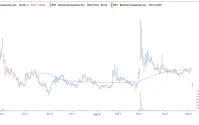Nvidia's $5 Trillion Valuation Isn't a Bubble. It's a Utility Bill.
When a company’s market capitalization crosses a number with twelve zeroes, the immediate, reflexive response is to look for the bubble. Nvidia makes history, becomes first company to reach USD 5 trillion market value feels, on the surface, like the apex of a speculative frenzy. The stock’s twelvefold surge since ChatGPT first blinked its digital eyes onto our screens screams irrational exuberance. But to dismiss this as just another dot-com-style mania is to fundamentally misread the data.
The valuation isn’t a reflection of hype. It’s the calculated price of turning an entire nation’s industrial base into a subscriber. What we’re witnessing isn’t a stock market bubble; it's the monetization of national infrastructure. And the blueprint for this strategy was laid bare not in a quarterly earnings call, but in a sweeping announcement about South Korea.
The Sovereign AI Playbook
Before the $5 trillion headlines, there was a press release that most market commentators glanced over. It detailed a massive public-private partnership in South Korea. The numbers are worth examining closely. The Korean government, Samsung, SK Group, Hyundai Motor Group, and NAVER Cloud are collectively deploying over a quarter-million—to be more exact, more than 260,000—NVIDIA GPUs. This isn't a simple hardware order. It's the foundation for what they’re explicitly calling "AI factories" and a "sovereign AI" ecosystem.
Let's break that down. The government's Ministry of Science and ICT is seeding a national AI computing center. Samsung is building an AI factory for semiconductor manufacturing (using NVIDIA’s Omniverse for digital twins). Hyundai is building another for autonomous driving and smart factories, backed by a $3 billion investment. SK Group is building a third, focused on an industrial AI cloud. This isn't about companies buying tools; it's about an entire country rewiring its economic engine around a single technology stack.
I've looked at hundreds of supply chain and enterprise sales agreements, and the language is typically transactional, focused on units and price points. The language here is different. Jensen Huang wasn’t talking about selling chips; he was talking about how Korea can now "produce intelligence as a new export." That’s a fundamental shift in the business model. It reframes Nvidia from a component supplier into something closer to a national utility.

This is where my analysis diverges from the consensus view of a speculative asset. When a nation’s key industrial players—from automotive to semiconductors—build their entire next-generation roadmap on your platform (specifically, on Blackwell and RTX PRO 6000 series GPUs), you’ve created a dependency that is incredibly difficult to unwind. The switching costs aren't just financial; they're strategic, measured in years of lost R&D and industrial momentum. What is the appropriate valuation multiple for a company that is becoming the power grid for the 21st century's most valuable commodity?
From Niche Hardware to Geopolitical Asset
The South Korea deal is the model, not the exception. It provides the causal link to the staggering valuation that followed. The market isn't just pricing in future chip sales. It’s pricing in the successful execution of a global strategy to become indispensable. We see echoes of this in the announcement of seven new supercomputers for the US government and the reported $500 billion in AI chip orders. The customers are no longer just corporations looking for a competitive edge; they are nations and industrial blocs engaged in a technological arms race.
This elevates Nvidia from a tech company into a geopolitical asset, subject to the same strategic calculus as oil reserves or advanced weaponry. The company’s executives now have to perform a delicate balancing act. You can almost picture Jensen Huang on a stage, the lights dim, carefully calibrating his words. He must simultaneously praise "America First" policies to secure domestic support while warning Washington that cutting off China deprives the U.S. of a massive developer ecosystem. This isn't a CEO selling a product; it's a statesman managing a strategic resource.
Some analysts, like Matthew Tuttle of Tuttle Capital Management, warn that the flywheel could seize "the moment investors start demanding cash-flow returns." It’s a valid concern in a normal market. But this isn't a normal market. The "investors" in the South Korea deal aren't hedge funds looking for a quarterly beat. They are conglomerates and governments with 30-year industrial plans. They aren't demanding immediate cash-flow returns; they are making a foundational investment in their own survival.
This raises a critical question about how we even measure a company like this. When your revenue stream is increasingly tied to national budgets and multi-decade industrial strategies, do traditional metrics like price-to-earnings ratios still apply? Or are we trying to use a yardstick to measure the temperature? The very framework of our financial analysis may be ill-suited for a company that operates on this scale. The risk isn't that Nvidia's earnings will miss by a few cents; the risk is a geopolitical event that realigns the entire global tech supply chain.
The Valuation Is the Moat
Ultimately, the $5 trillion valuation isn't the sign of a bubble about to pop. It's the result of a strategy that has made Nvidia's hardware the bedrock of modern industry and national ambition. The number itself has become a defensive moat. It provides the capital to fund R&D at a scale competitors can't match, to secure foundry capacity years in advance, and to absorb smaller innovators into its ecosystem. The high stock price isn't a symptom of success; it's a core component of the strategy, a self-reinforcing loop of dominance. While competitors may "chip away," as one analyst put it, they are bringing knives to a drone fight. They are selling parts; Nvidia is selling the entire factory.









